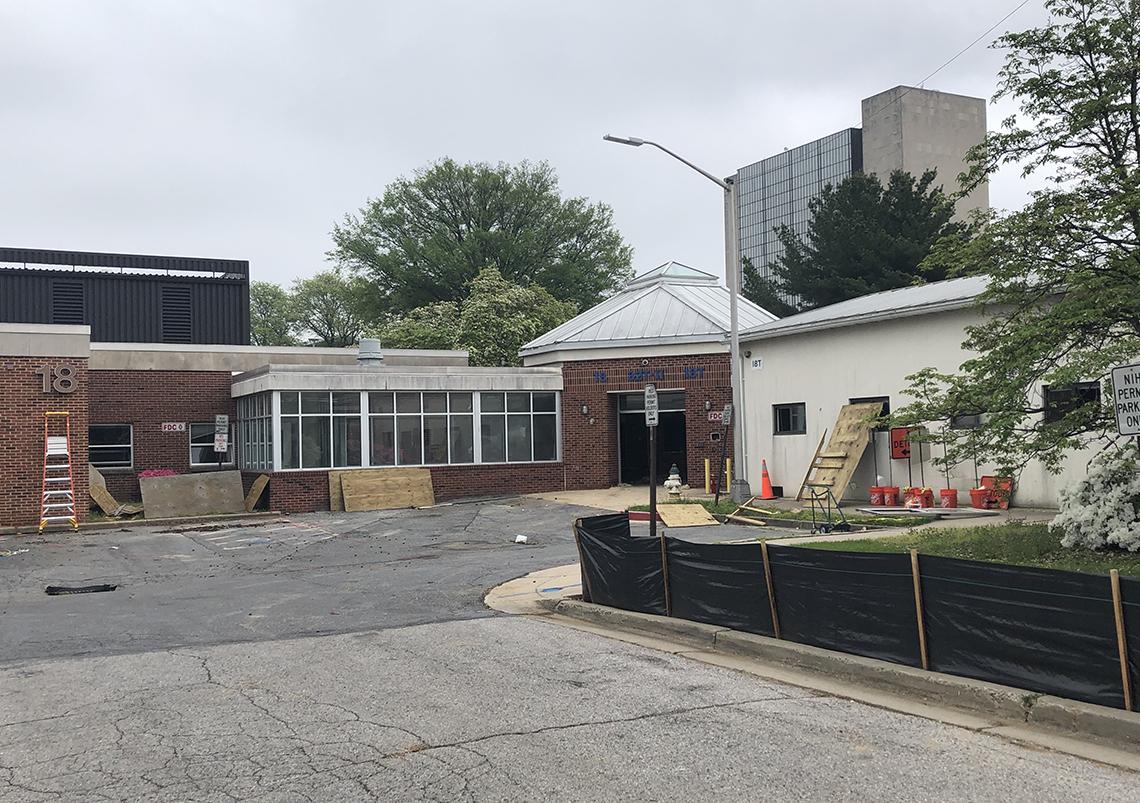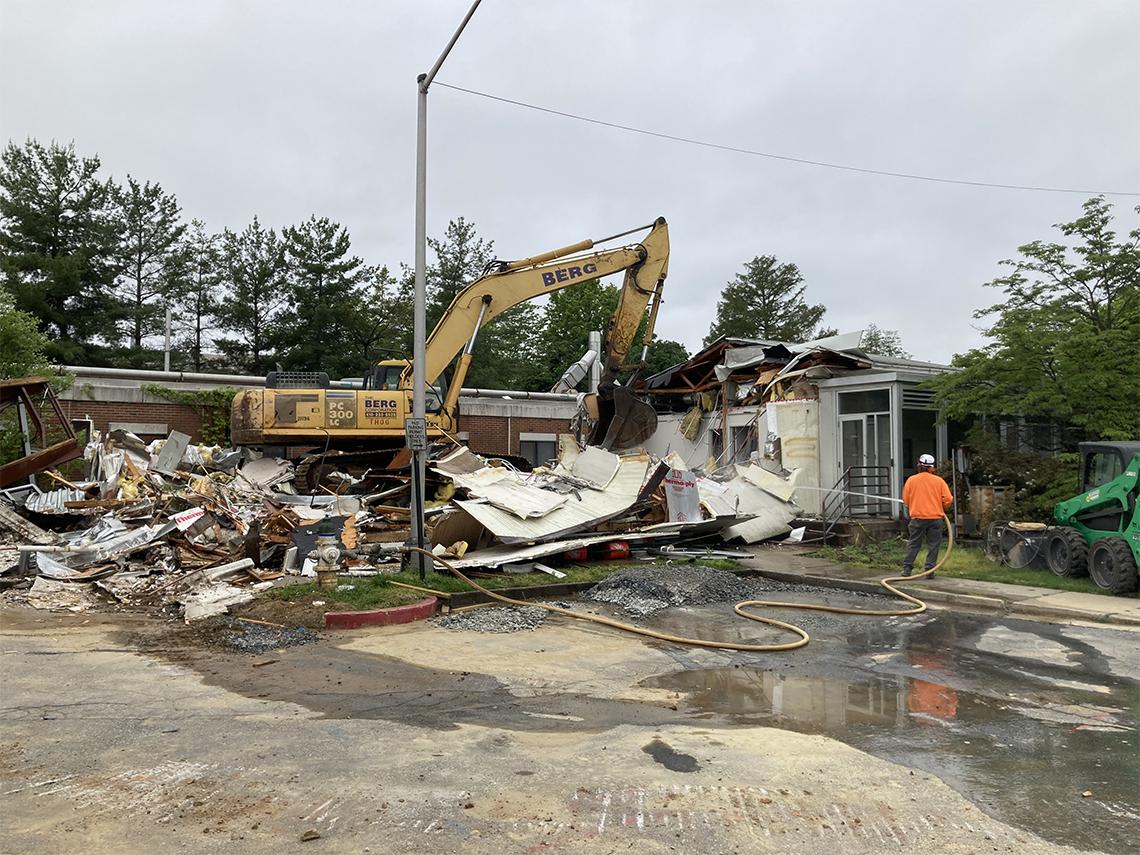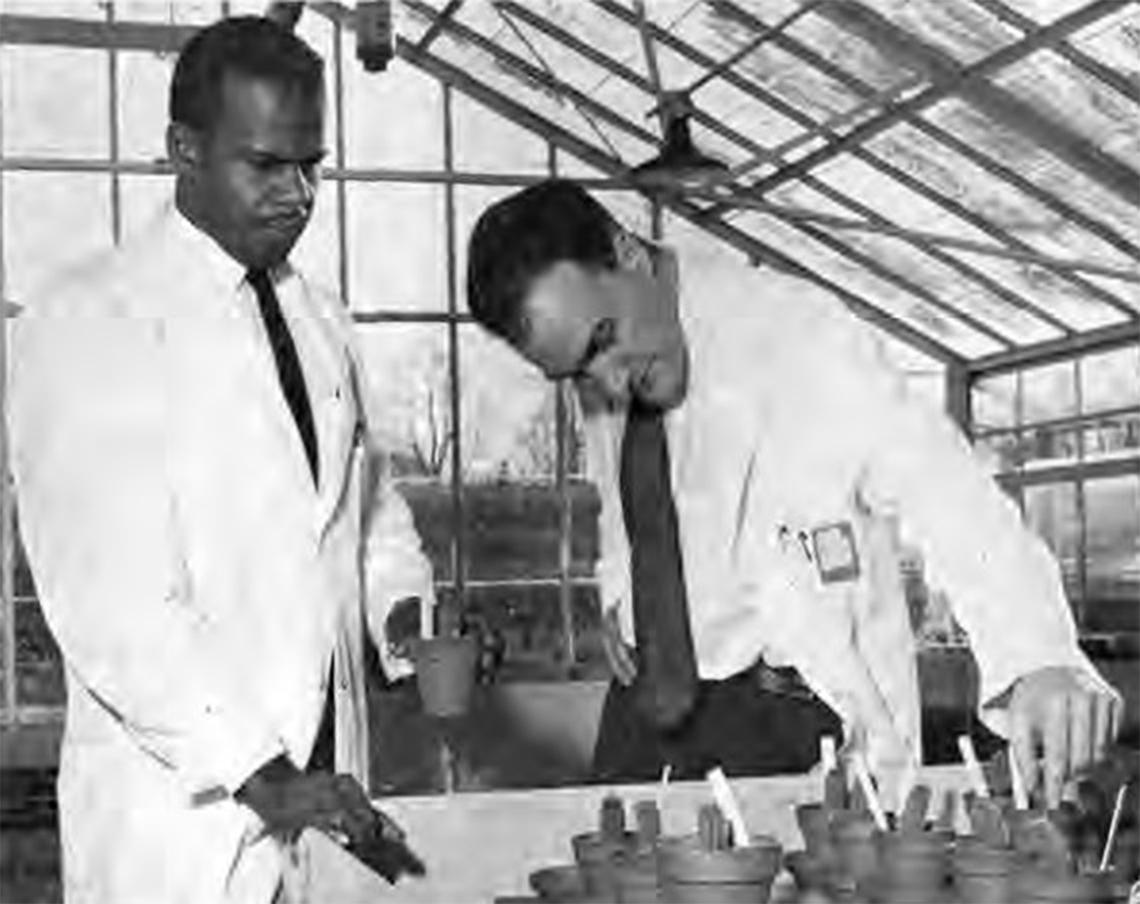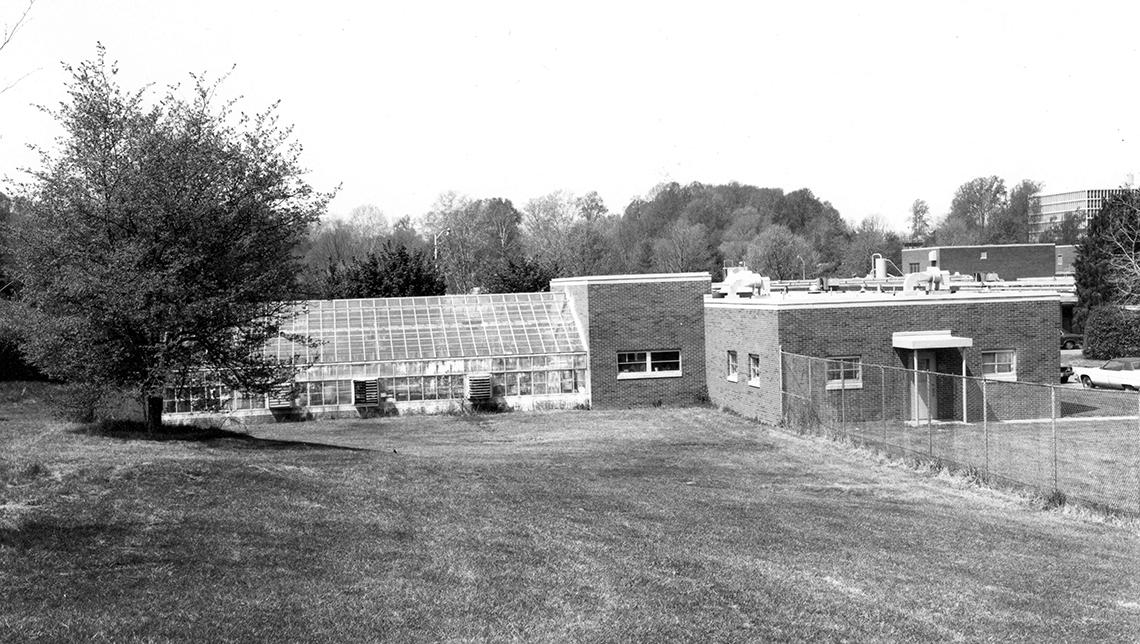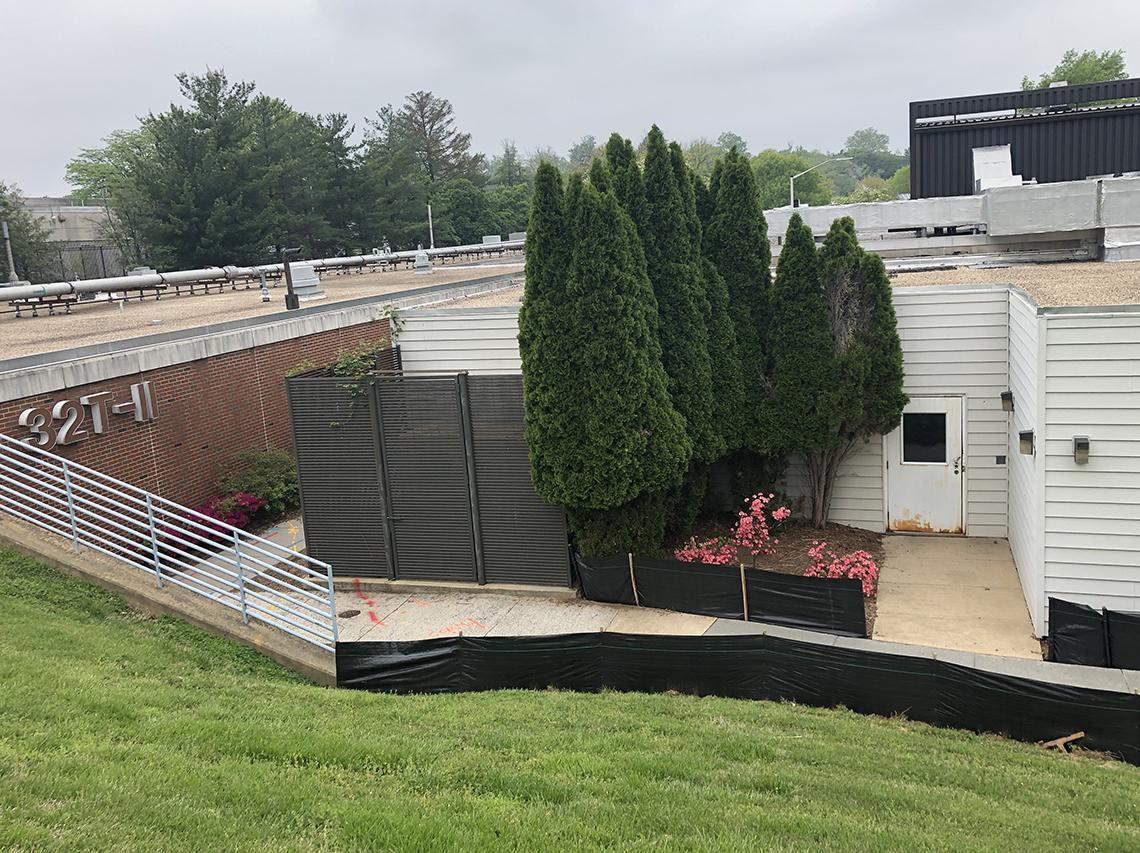Lot 18 Will Be Built on Former Lab Site
A lab complex no longer in use was demolished on the Bethesda campus in May and the space is about to get paved over.
“For this project, the buildings we tore down were much more interesting in their heyday than what we’re building in their place,” said Josh Olson, project officer in ORF’s Division of Design and Construction Management.
Bldgs. 18 and 32, an interconnected complex on the south side of campus, were vacated about 5 years ago, deemed no longer cost-effective to maintain. Only a few remnants—shelves, benches, beaker drying racks—had remained of the research once conducted there.
The space is now getting leveled into a paid visitor parking lot, part of the Building for All campaign to ultimately improve research capability and patient access. This new surface parking—lot 18—will offset the loss of visitor parking in lot 4A across from Bldg. 31 that’s now designated for patient valet parking while the Clinical Center builds an extension.
For decades prior, the 18-32 complex was the site of vibrant research. The Office of NIH History and Stetten Museum dug into its archives to share the site’s rich history.
Bldg. 18, built in 1973, began as a small, temporary lab and animal space for NICHD’s Reproductive Research Branch, then headed by Dr. Mortimer Lipsett—immortalized with a namesake amphitheater in the Clinical Center. The building and its subsequent annex, 18T, would continue to be used by several branches within NICHD for the next 44 years.
Bldg. 32, despite its higher number, was built earlier, in 1958. The original structure was a greenhouse filled with medicinal plants under study by NIMH investigators. In the early 1990s, the greenhouse was torn down and replaced by Bldg. 32T and an annex, 32T-II, used primarily by NICHD in the 2000s.
A notable discovery took place in the 18-32 complex. It’s the site where Dr. Eric Betzig and colleagues built the PALM (photo-activated localization microscopy) for which he received the 2014 Nobel Prize for Chemistry. PALM transformed microscopy, allowing investigators to peer into cells on a nanoscale. Betzig tested and refined PALM in the lab of NICHD’s Dr. Jennifer Lippincott-Schwartz.
Now, all of that is history. “I think the parking lot is making good use of the area we’re freeing up through their demolition,” said Olson.
Lot 18 is slated to be completed and open by late summer. The site plan includes a small grassy plaza in one corner where NIH’ers can congregate.

